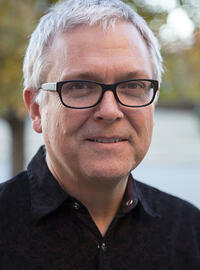Urantia, Nebadon, and the Master Universe: A New Film on Perspective
Urantia, Nebadon, and the Master Universe: A New Film on Perspective
By Richard Jernigan, associate trustee, Urantia Foundation, Texas, United States
3,840,101. If you recognize that as the number of inhabited planets in our local universe—you are right. It is a rather foreboding number and quite humbling when you ponder that our Creator Son chose our planet out of those millions for his world of human incarnation.
This project started when I wanted simply to make a visual of our local universe and our local system and where our world Urantia sits within all that.
I decided on the simplest approach and just turned it all into data representing each inhabited planet in our local universe with a blue square. Originally I played around in Photoshop, making a chart with 3,840,101 pixels divided among 10,000 rods representing local systems. Next, I envisioned making a long print two feet tall and forty feet long in which Urantia would be a tiny, one millimeter square. I would still like to do that. Instead, I turned this into a video exploring beyond the local universe level to depict Urantia within the whole master universe.
Urantia, Nebadon, and the Master Universe is primarily for readers of The Urantia Book who have read the descriptions of the universe and have a concept of the book’s cosmology. I imagine that non-readers will be bewildered, and readers will be captivated.
For me, putting something like this together provided a number of insights:
- Local universes are the primary building blocks of the seven superuniverses. Each is a unified personal creation.
- Our local system is well developed. The average-sized local system has 384 inhabited planets. The smallest system, I conjecture, has about 200 inhabited planets, and the largest system has about 700 planets.
- When I was quite far into building these graphics, I learned about a cluster of 1,000 stars that is about 500 light-years away and is about one-half billion years old (young). The Beehive Cluster could well be in our local universe, and it is likely to have no inhabited planets. If that is the case, then our local universe is more developed than I originally suspected.
- If you place a golf ball in the center of the United States, that is another way of thinking about the size of the grand universe (the seven superuniverses plus the central universe) compared with the farthest outer-space level.
- Two cups of salt minus two tablespoons yields 3.8 million grains of salt. Pour that on a table to get a sense of how many planets are in our local universe.
- 3,840,101 periods typed single-space on your word processor in a 12-point font will yield 592 pages of periods. One of those periods is Urantia.
- This immense feeling of smallness makes my personal problems seem very, very insignificant. How liberating!
